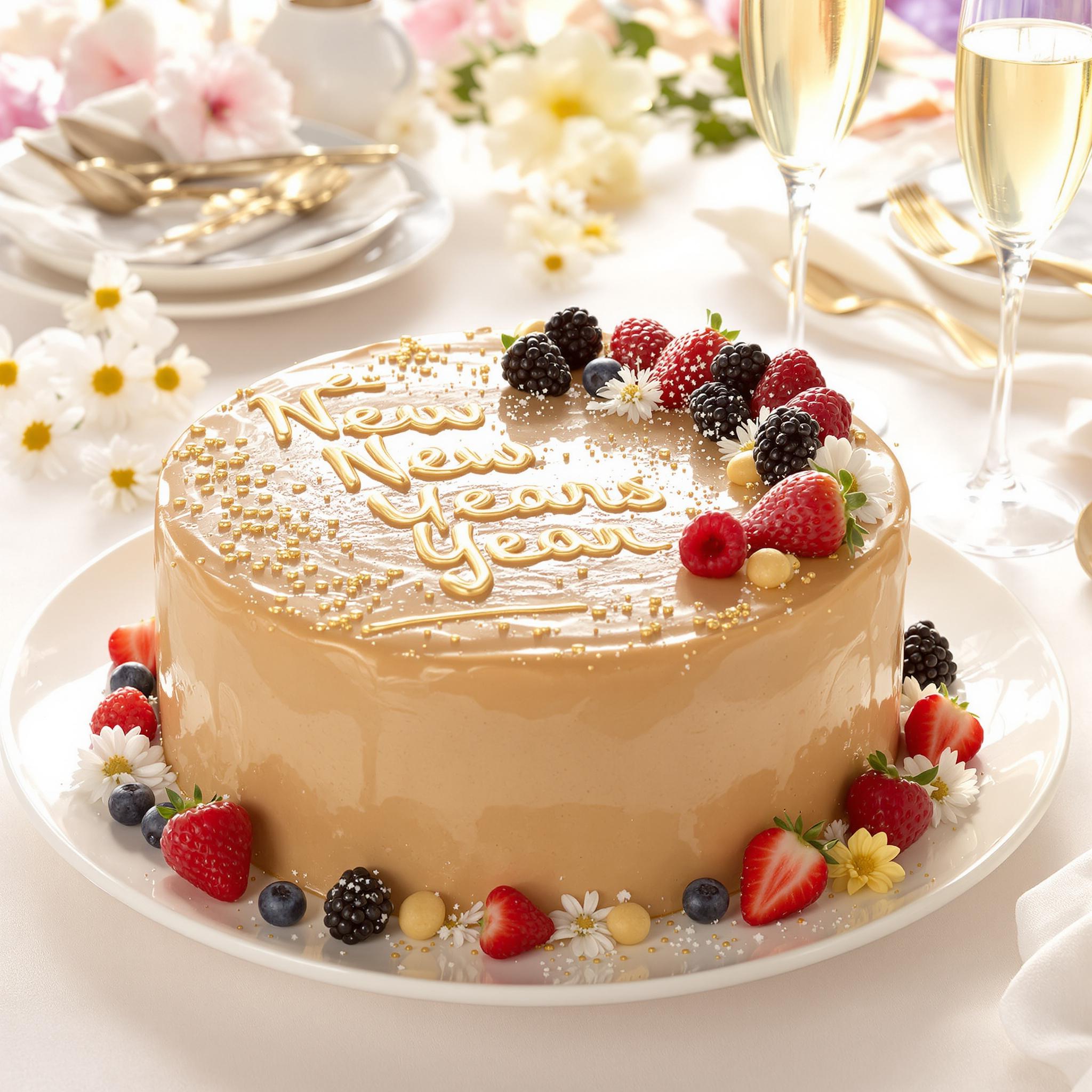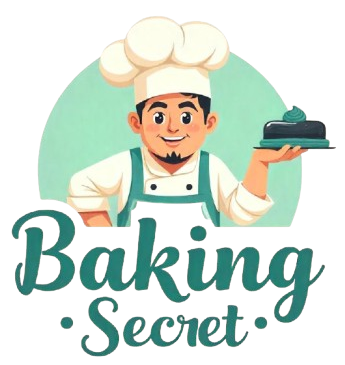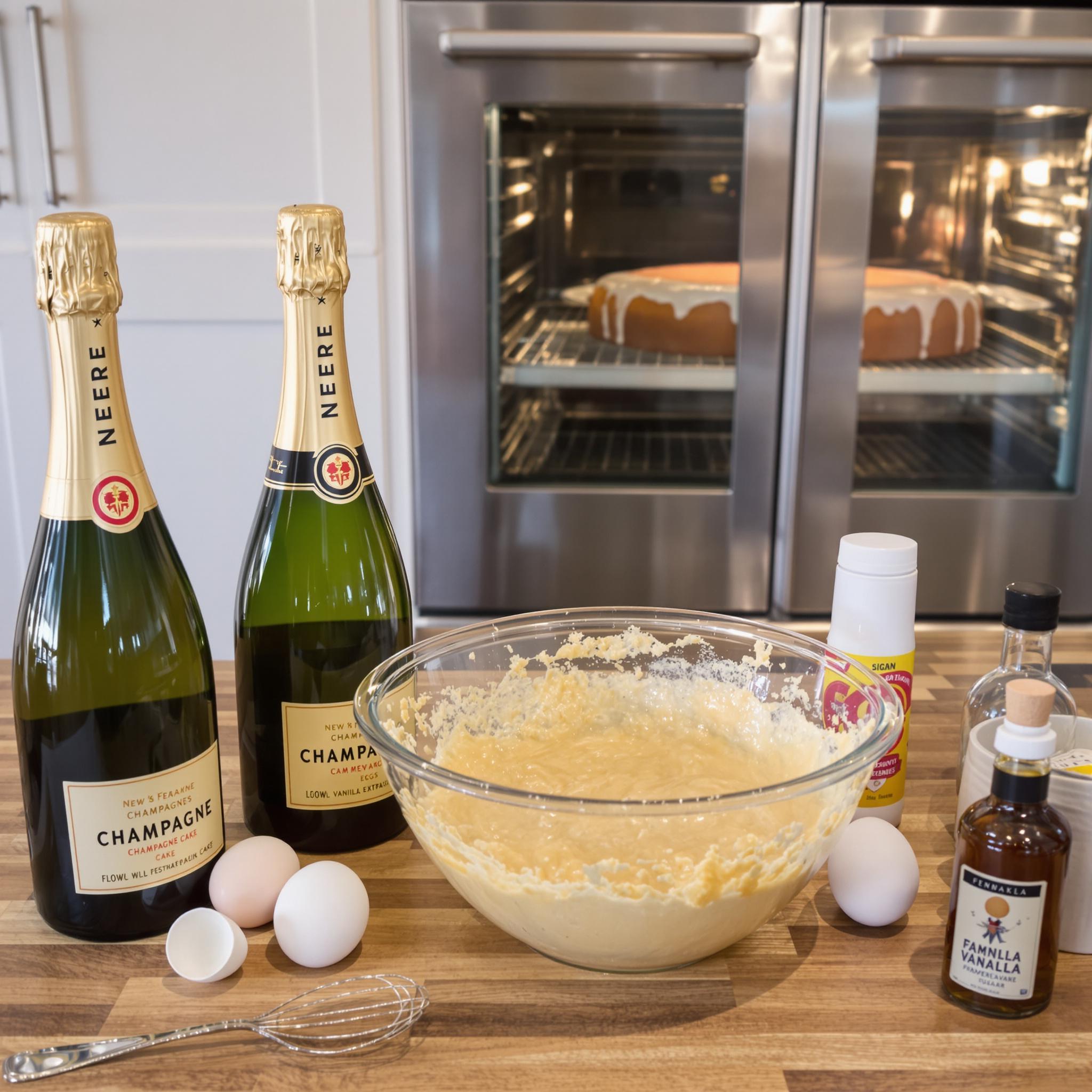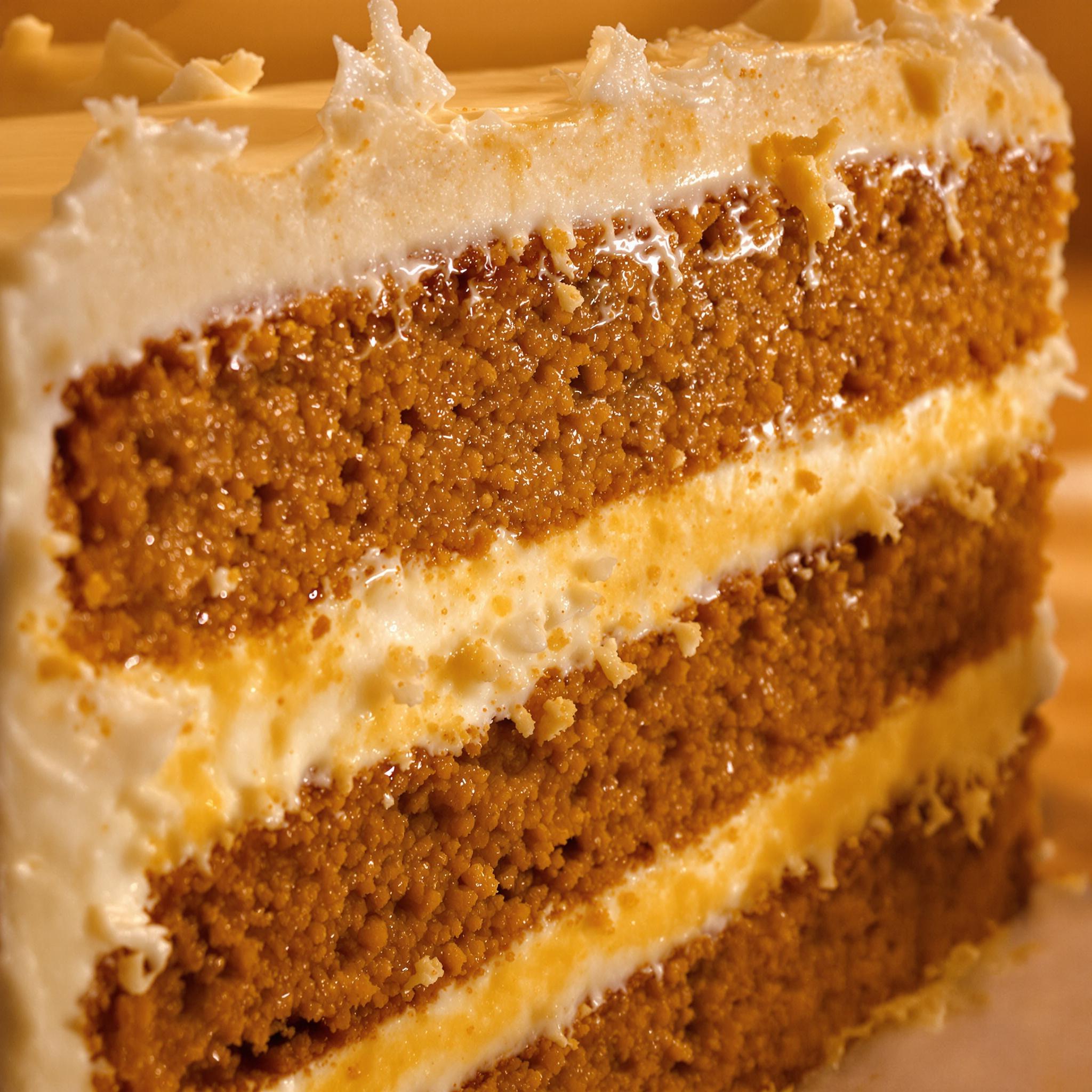
Introduction to the New Year’s Champagne Cake
There’s something magical about a cake that feels like a celebration in every bite, and this New Year’s Champagne Cake is exactly that. Imagine layers of soft, golden sponge infused with the delicate effervescence of champagne, topped with a silky glaze that glistens under the lights. Whether you’re ringing in the New Year or celebrating a special occasion, this cake will leave your guests raving. I first made this for a family gathering, and it was such a hit that it’s now my go-to recipe for festive moments. Let me share why this cake deserves a spot in your recipe collection.
The Sparkling History Behind the Champagne Cake
Champagne has long been synonymous with celebrations, luxury, and joy. Incorporating it into desserts dates back to European traditions where bakers sought to infuse their creations with the elegance of sparkling wine. The modern twist? A cake that combines the sophistication of champagne with the comfort of a classic dessert. This sparkling cake recipe bridges tradition and innovation, making it perfect for both formal events and cozy gatherings. Fun fact: I once baked this cake for a friend’s birthday, and she said it felt like “a party on a plate.”
Why You’ll Love This New Year’s Champagne Cake Recipe
What makes this champagne-infused cake so irresistible? First, its flavor profile is unmatched—light, airy, and subtly sweet with a hint of bubbly goodness. Second, it’s surprisingly simple to make, even if you’re not an experienced baker. Plus, it looks stunning with minimal effort. Whether you’re serving it at a holiday dinner or bringing it to a potluck, this cake will steal the show.
Perfect Occasions to Prepare Your Champagne Cake
This festive cake is ideal for New Year’s Eve parties, anniversary dinners, or bridal showers. It’s also a fantastic choice for birthdays when you want something unique yet elegant. I’ve even served it at casual brunches, and it never fails to impress. Anytime you want to add a touch of sparkle to your table, this cake fits the bill.
Ingredients for the New Year’s Champagne Cake
- 1 cup unsalted butter, softened
- 1 ½ cups granulated sugar
- 4 large eggs
- 2 teaspoons vanilla extract
- 2 ½ cups all-purpose flour
- 2 ½ teaspoons baking powder
- ½ teaspoon salt
- 1 cup champagne (dry or semi-sweet)
- ½ cup whole milk
- 1 cup powdered sugar for glaze
- 2 tablespoons champagne for glaze
Substitution Options for Flexibility
If you don’t have champagne, you can use prosecco or sparkling cider for a non-alcoholic version. Swap butter with margarine if needed, and almond milk works well as a dairy-free alternative to whole milk. For a gluten-free option, try using a 1:1 gluten-free flour blend. These substitutions ensure everyone can enjoy this bubbly dessert.
Preparation Steps
Step 1: Preparing the Base
Start by preheating your oven to 350°F (175°C) and greasing two round cake pans. In a large mixing bowl, cream the softened butter and sugar until light and fluffy—a process that fills your kitchen with a heavenly aroma. Add the eggs one at a time, beating well after each addition, then stir in the vanilla extract. Pro tip: Make sure your butter is truly softened but not melted; this ensures a smooth batter.
Step 2: Mixing Dry Ingredients
In another bowl, whisk together the flour, baking powder, and salt. Gradually add these dry ingredients to the wet mixture, alternating with the champagne and milk. Begin and end with the flour mixture to keep the batter balanced. As you mix, you’ll notice how the champagne adds a subtle fizz, creating tiny air bubbles that promise a light texture.
Step 3: Baking the Cake Layers
Divide the batter evenly between the prepared pans and smooth the tops with a spatula. Pop them into the oven and bake for 25-30 minutes, or until a toothpick inserted comes out clean. While they bake, you’ll catch whiffs of warm, buttery goodness wafting through your home. Once done, let the cakes cool completely before assembling.
Step 4: Creating the Glaze
For the finishing touch, whisk together powdered sugar and champagne until you achieve a thick yet pourable consistency. Drizzle this shimmering glaze over the cooled cake layers, allowing it to cascade down the sides. The result? A glamorous champagne cake that looks almost too beautiful to eat—almost!
Chef’s Tip for an Extra Special Touch
For an extra layer of indulgence, brush each cake layer with a little extra champagne before stacking. This enhances the flavor and keeps the cake moist. Trust me—it’s worth the extra step!
Time Required for Your Champagne Cake
- Prep Time: 20 minutes
- Baking Time: 30 minutes
- Cooling Time: 45 minutes
- Total Time: Approximately 1 hour and 35 minutes
Nutritional Information
Per slice (assuming 8 slices):
- Calories: 350 kcal
- Protein: 4g
- Fat: 16g
- Carbohydrates: 45g
- Sugar: 30g
An Interesting Curiosity About Champagne Cake
Did you know that champagne contains natural sugars that caramelize during baking, giving the cake a golden hue and enhancing its sweetness? This chemical reaction is part of what makes a champagne-infused cake so uniquely delicious.
Necessary Tools for Baking Success
- Mixing bowls
- Electric mixer
- Measuring cups and spoons
- Rubber spatula
- Cake pans
- Wire cooling rack
Storage Instructions for Your Cake
To store your New Year’s Champagne Cake, cover it tightly with plastic wrap or place it in an airtight container. This prevents it from drying out and helps retain its moisture. If frosted, refrigerate the cake to preserve the glaze.
For longer storage, freeze individual slices wrapped in parchment paper and placed in a freezer-safe bag. They’ll stay fresh for up to three months. Simply thaw at room temperature before serving.
Avoid leaving the cake uncovered, as exposure to air can cause the flavors to dull and the texture to become stale.
Tips and Tricks for Perfect Results
- Use room-temperature ingredients for a smoother batter.
- Don’t overmix the batter; stop as soon as everything is combined.
- Test the cake for doneness with a toothpick; it should come out clean but slightly moist.
- Add edible glitter to the glaze for a festive touch.
Serving Suggestions
Serve your champagne cake alongside a glass of bubbly for a truly immersive experience. Pair it with fresh berries or a dollop of whipped cream for added flair. It’s also delightful with a scoop of vanilla ice cream.
Healthier Alternatives for the Recipe
Want to tweak this recipe for a healthier spin? Here are six variations:
- Reduced Sugar Version: Cut the sugar by half and use a sugar substitute like stevia.
- Whole Wheat Flour: Substitute half the all-purpose flour with whole wheat for added fiber.
- Vegan Option: Replace eggs with flax eggs and use plant-based milk and margarine.
- Low-Fat Glaze: Use Greek yogurt instead of powdered sugar for a tangy finish.
- Gluten-Free Cake: Opt for a gluten-free flour blend and ensure your champagne is certified gluten-free.
- Non-Alcoholic Cake: Swap champagne with sparkling apple juice for a kid-friendly treat.
Common Mistakes to Avoid
Mistake 1: Overmixing the Batter
Overmixing can lead to a dense cake rather than the light, airy texture we’re aiming for. To avoid this, mix just until the ingredients are combined. Remember, a few lumps are okay!
Mistake 2: Skipping the Cooling Step
As tempting as it may be to frost a warm cake, doing so will cause the glaze to melt and slide off. Patience pays off here—let the layers cool completely before decorating.
Mistake 3: Using Flat Champagne
Flat champagne won’t provide the same lift and flavor complexity. Always use freshly opened champagne for the best results.
Frequently Asked Questions
Can I Use Sparkling Wine Instead of Champagne?
Absolutely! While true champagne comes from the Champagne region of France, any quality sparkling wine will work beautifully in this recipe.
How Do I Prevent My Cake From Sinking?
Ensure your baking powder is fresh and measure your ingredients accurately. Also, avoid opening the oven door too early, as sudden temperature changes can cause sinking.
Is This Cake Suitable for Kids?
While most of the alcohol evaporates during baking, some traces may remain. For a kid-friendly version, opt for sparkling cider instead of champagne.
Can I Make This Cake Ahead of Time?
Yes! You can bake the layers a day in advance and store them wrapped tightly. Assemble and glaze just before serving for optimal freshness.
What If I Don’t Have Round Pans?
Square or rectangular pans work fine too. Adjust the baking time slightly, checking for doneness with a toothpick.
How Do I Know When the Cake Is Done?
The cake is ready when a toothpick inserted into the center comes out clean but slightly moist. The edges should pull away from the pan slightly.
Can I Freeze This Cake?
Definitely! Wrap individual slices in plastic wrap and freeze for up to three months. Thaw at room temperature before enjoying.
Does the Type of Champagne Matter?
Yes! Dry or semi-sweet champagnes work best. Avoid overly sweet varieties, as they can alter the cake’s balance.
Why Is My Glaze Too Thin?
If your glaze is runny, add more powdered sugar a tablespoon at a time until you reach the desired thickness.
Can I Add Fruit to the Cake?
Certainly! Fresh berries or citrus zest complement the champagne flavor wonderfully. Fold them gently into the batter.
Conclusion
The New Year’s Champagne Cake is more than just a dessert—it’s a celebration on a plate. With its light texture, sophisticated flavor, and dazzling presentation, it’s sure to become a favorite in your recipe repertoire. So grab a bottle of bubbly, roll up your sleeves, and get ready to create a cake that’s as unforgettable as the moments you’ll share while enjoying it. Cheers to good food and great company!

Equipment
- Mixing bowls
- Electric mixer
- Measuring cups and spoons
- Cake pans
- Wire cooling rack


